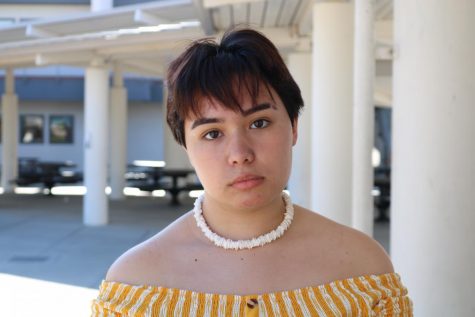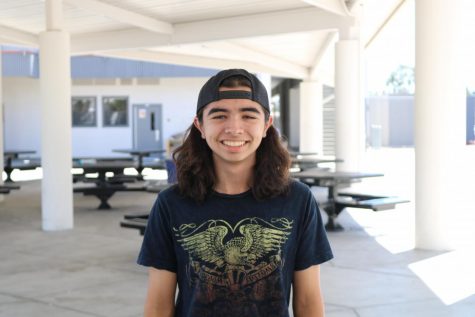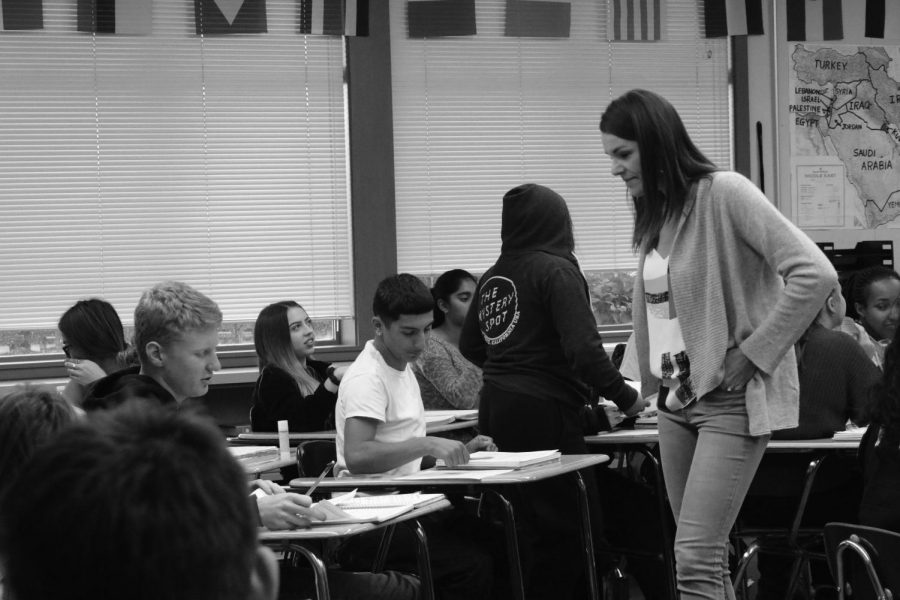History taking a thematic approach
American history teacherAnja Wheeler checks in with students while they do work in class. Wheeler is one of four Cal High teachers that has started teaching their history classes thematically, rather than in the traditional chronological order.
Imagine a history class that isn’t taught in the typical chronological fashion that most classes are.
Imagine a history class where racial issues, politics, and many other themes are taught together rather than being covered in their respective time periods.
Cal High students don’t have to imagine this anymore because four teachers have started to teach their classes thematically, rather than in chronological order.
Instead of teaching from a chronological timeline starting with the American colonies for U.S. history classes, teachers are focusing on themes and going into depth on the subjects.
These new changes have affected many students in a positive way.
“It’s more fun, more entertaining,” junior Sofia de Sosa said. “History is my favorite class now.”
Students such as de Sosa and those in these history courses have found themselves not only enjoying but participating more in class.
“I’ve seen an increase in student engagement,” American history teacher Anja Wheeler said. “Not every unit will appeal, but there are enough units that students can relate to, or know about already. It really makes history appeal to them.”
Some teachers began switching to the newly structured curriculum within the last two years, and others have since joined them because of the positive effects seen in the classroom.
“I like teaching like this. It allows me to bring in more current events and issues,” Wheeler said. “It makes more sense to me, and makes me a better teacher.”
These teachers are making history more enjoyable by bringing in modern events to connect with the past. Politics and immigration have been around since the beginning of America’s history, but connecting it to what is happening right now has excited many students in these classes.
Principal Christopher George thinks the concept of teaching history thematically is a good idea.
“I think it’s the right way to go, but we need to explain why we’re doing this, to parents and students of Cal High,” George said.
Not all students agree with this new approach to teaching the subject.
“I prefer chronological classes because it was always taught like that,” junior Denise Tejera Simkoviova said. “It’s easier for me to learn the years of what we’re learning.”
Other students agree that the reason they like having history classes taught in a chronological order is that they feel like they can grasp a full timeline.
“Chronologically, it sets a timeline in your mind,” sophomore Rose Shah said. “If it were themes, I wouldn’t have fully understood it.”
This new curriculum was implemented so students could connect current events to what happened in the past.
One example is the immigration unit. The class starts by discussing the first immigrants to the United States before moving on to different laws regarding immigration over the years. It then gets into hot-button current issues surrounding immigration today.
This thematic unit provides students with a way to connect to current and past immigration issues, while understanding both sides of the many arguments surrounding it.
American history focuses on how America was formed, and how we got to the present.
“To do that, we have to look at what’s happening now, and then go back in time and figure out what caused all this to happen,” history teacher Michelle Curach-Turner said.
In the class, students start with the media, political parties, what it means to be an American, immigration, race, then move on to gender, the LGBT+ community, war, economics, and foreign policy as their own units. The class goes over the history of these topics as well as the current importance of them.
“It’s beneficial for students to have a class where they can connect modern issues to things happening right now,” Curach-Turner said. “Kids get to see what’s going on today. We talk about modern issues, like the #MeToo movement, and figure out how we got to this point.”
Having a diverse range of classes is important to students.Many may excel in classes like these, and some may excel in a traditional class.
Having the opportunity to explore different kinds of classroom styles, is crucial for a student’s education.

Ceci Musgrove has been in the newspaper class for the past two years. As a senior, they are one of the two features editors. Last year they were a reporter...

Eddy Cordero is a Co-Editor for photography in The Californian. He is a junior who enjoys mountain biking, skating, playing/writing music, And of course...





